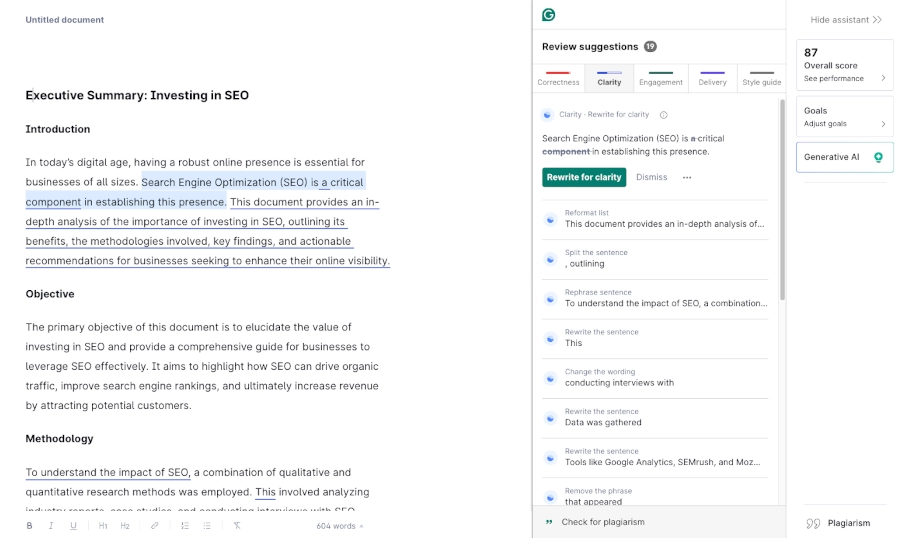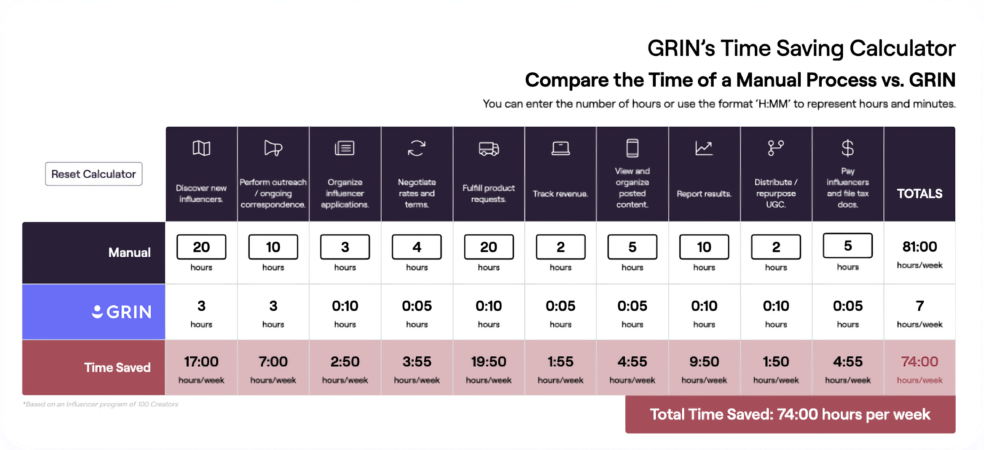Key decision-makers are busy people with demanding schedules. To get their buy-in, you need to make a great first impression. A strong executive summary is crucial to winning over the room.
In this blog, we’ll dissect executive summaries in complete depth, including:
- The purpose of an executive summary.
- What to include in an executive summary.
- The five steps to writing an executive summary.
- Three executive summary FAQs.
What is an executive summary?
An executive summary is an elevator pitch in written form. The summary outlines what’s coming in the document, preparing readers to digest the information.
Executive summaries provide context.
Imagine you opened up a 50-page document that went straight into chapter one. The reader would struggle to understand why the content matters.
Additionally, as they progress through the document, they would find it challenging to understand how different sections are related.
What is the purpose of an executive summary?
An executive summary is arguably the most essential part of a business document.
Executive summaries provide a concise overview of the key elements to be discussed. They allow the audience (often comprised of busy executives) to grasp the main ideas quickly and mentally prepare them for what’s to come.
By highlighting the most critical aspects of the presentation, you instantly communicate the topic/project’s value and provide stakeholders with a platform to make informed decisions.
First impressions matter. A well-written and presented executive summary peaks curiosity and generates interest — meaning your audience is primed and ready to explore the topic further.
Good executive summaries serve as a standalone document and provide a complete picture even if someone doesn’t read the rest of the document, thus making them an excellent reference point, allowing readers to revisit critical points without going through the entire deck.
What to include in an executive summary
Executive summaries don’t need to be long (that would defeat their purpose). Every summary should include three elements:
Context
Why should a document exist?
Getting the context right is huge when putting together an executive summary. It’s what clues the executives into why they should even care about reading the rest.
For example, if you’re detailing the company’s plans for taking on new global markets, don’t just jump straight into payroll tax rates and labor law mumbo-jumbo.
First, set the stage in the executive summary — clarify why worldwide expansion is strategically vital for future growth.
Then, they’ll understand why you had to spend so much time getting into the nitty-gritty of global payroll compliance and operations for all those different countries. Paint that bigger picture first. You show them why they must dive deeper into the report’s recommendations. With the context set, they’ll be primed and motivated to actually read on.
Clarify objectives
The summary should clearly state the goals of the entire document. It should make them easy for the reader to understand.
Whether the document states key goals and purposes, proposes new strategies, or reports results, the summary clarifies these goals.
It helps the reader quickly grasp the document’s intent and relevance. This makes informed decision-making easier.
Using a paraphraser tool can help a lot. It refines and simplifies complex statements. This ensures that the goals are clear and brief without changing their meaning.
Detail strategies and methods
So far, the summary has:
- Stated the document’s purpose.
- Explained the role of the document in serving the purpose.
All that remains is the “how.”
This section should offer a high-level overview of the approaches to achieve the outlined objectives. It’s essential to present this information in a way that is both comprehensive and concise, allowing stakeholders to grasp the core strategies.
For instance, if the document pertains to launching a business, you must know that LLC laws differ by state. It means that the executive summary should briefly touch on state-specific requirements that are covered in greater detail in the full document, such as:
- Minimum number of members
- Management structure
- Taxation
This helps readers understand the importance of considering their state’s unique LLC laws when making decisions based on the document’s recommendations.
5 steps of writing an executive summary
You can make an executive summary flow logically in five steps.
1. Review of the entire document
Start by reading the entire document carefully. Understand its main points.
For example, if the document is a business plan presentation, the most important sections are:
- Company strategy
- Key milestones
- Product profile
- Market share
- Revenue
- Growth
- Profit
Key milestones show progress over time and tell a story of the company’s journey, helping readers see past achievements and future goals. Market share and growth indicate the company’s position in the industry and reveal how well it is performing compared to competitors.
The product profile provides details about the company’s offerings, including product features and benefits. This helps readers understand the company’s unique selling points. The company strategy outlines the plans for future growth, including business goals and methods to achieve them. This section is crucial for understanding the company’s direction.
Revenue and profit data show the company’s financial health and provide insight into its economic strength and profitability.
These sections combined give a comprehensive view of the business.
2. Create an outline
An outline of the structure helps organize the executive summary. Start with an introduction. This gives a brief overview of the document. Next, state the objective. Explain what the document aims to achieve.
Then, describe the methodology. This covers the approaches and methods used. It shows how the data was gathered and analyzed. Following this, present the findings. These are the main results and discoveries from the document.
After the findings, move to the recommendations. Suggest actions based on the findings. Finally, conclude the summary. Sum up the main points and reiterate the importance of the document.

Following this structure is important. It helps organize the information logically. It makes it easier for the reader to navigate through the summary. A clear structure ensures that the key points are highlighted.
3. Highlight the key takeaways
Identify the critical facts and information in the document. These are the points that might influence decision-making. Include these in the executive summary. Avoid adding too much detail. Focus on the essential points.
Key takeaways might include major findings, significant data, and impactful recommendations. They should be easy to understand. The goal is to provide a clear picture of the document’s main points.
For instance, this should be highlighted if the document reveals a new market opportunity. If there are recommendations for cost-saving measures, include these. The aim is to ensure that the reader understands the most critical aspects without getting lost in the details.
4. Use a solution-first format
Start with the solution. Present it clearly and invitingly. Explain how the solution addresses the problems identified in the document. Offer a step-by-step guide to implementing it.
For example, if the document proposes a new marketing strategy, start by outlining it. Explain its benefits and how it can be implemented. Break down the steps needed to achieve the desired results.
Using a solution-first format grabs the reader’s attention and shows that the document is action-oriented. This format is effective because it immediately presents a clear plan of action and helps the reader understand the practical implications of the document.
5. Proofread and simplify
Once the executive summary is written, proofread it carefully. Ensure that it is clear and concise. Check that it accurately describes the content of the entire document. Look for any errors or unclear sentences. Use Grammarly to help with the heavy lifting.

Eliminate repetitive or cliché language. Use straightforward words. The goal is to make the summary easy to read and understand. Avoid using complex words or jargon.
Consider the writing style. Ensure that it suits the target audience. The tone should be professional yet easy to understand.
Simplifying the summary makes it more effective. It ensures that the main points are communicated clearly. A well-written executive summary can make a strong impression. It helps the reader quickly understand the key points of the full document.
Key takeaways
When writing an executive summary, remember to keep it concise and focused on the essential points.
- Start by providing clear context and stating the document’s objectives.
- Summarize the key findings and recommendations succinctly, ensuring they are easy to understand.
- Use our proposed structured format to organize the information logically.
- Proofread and mercilessly remove anything that hinders clarity.



















